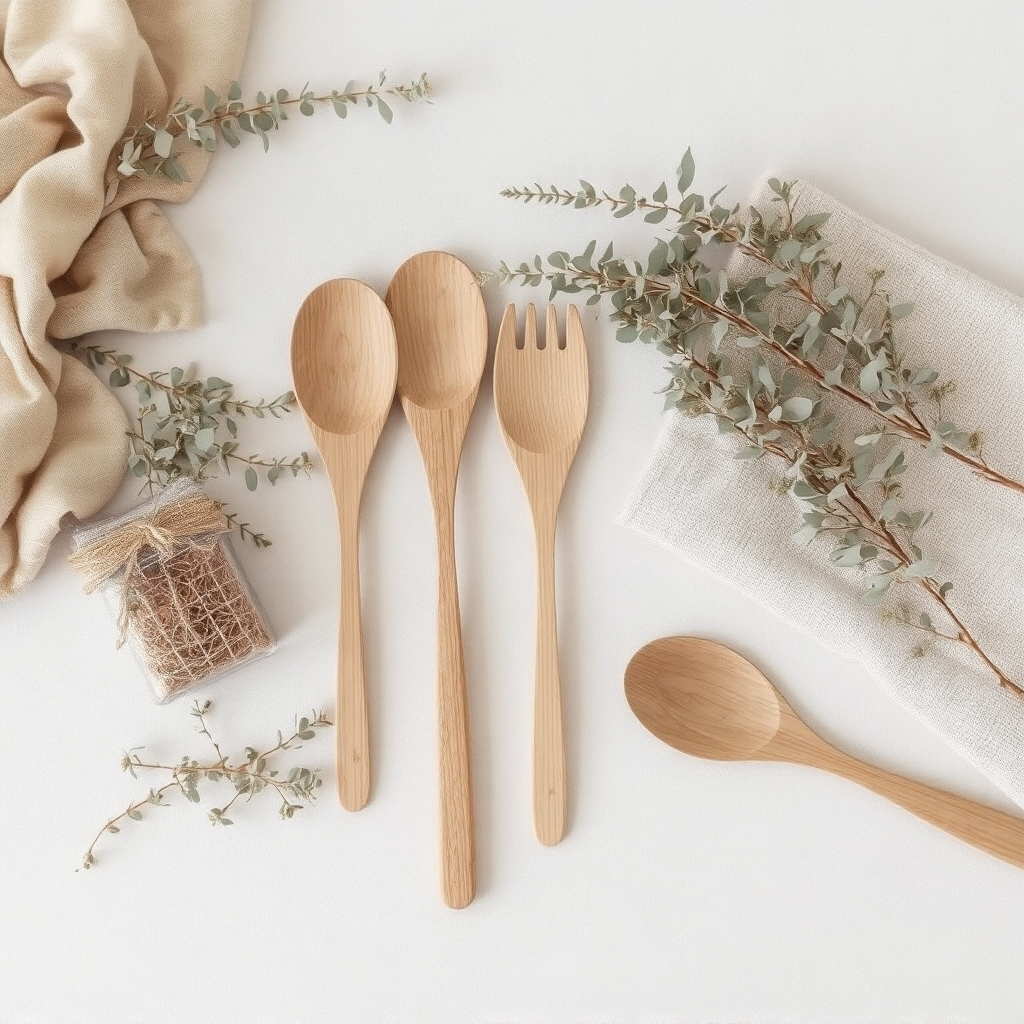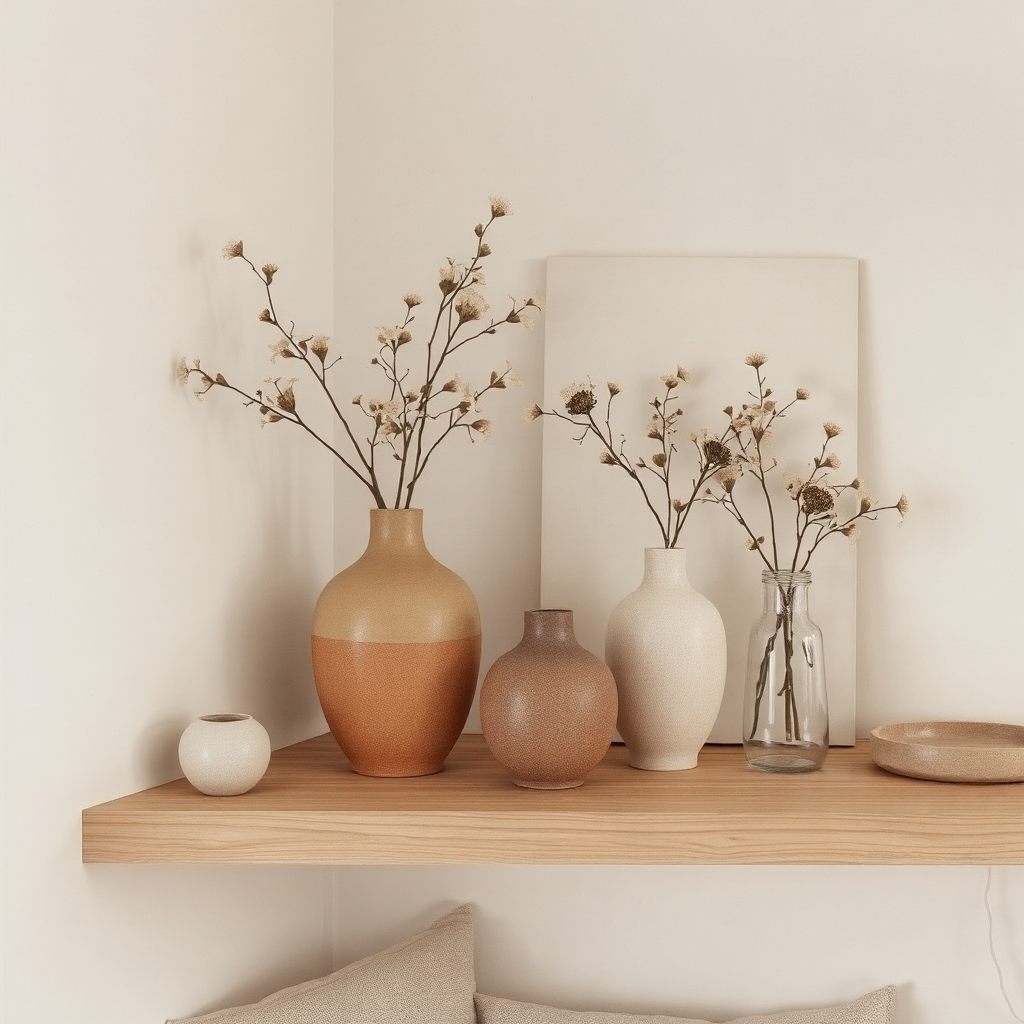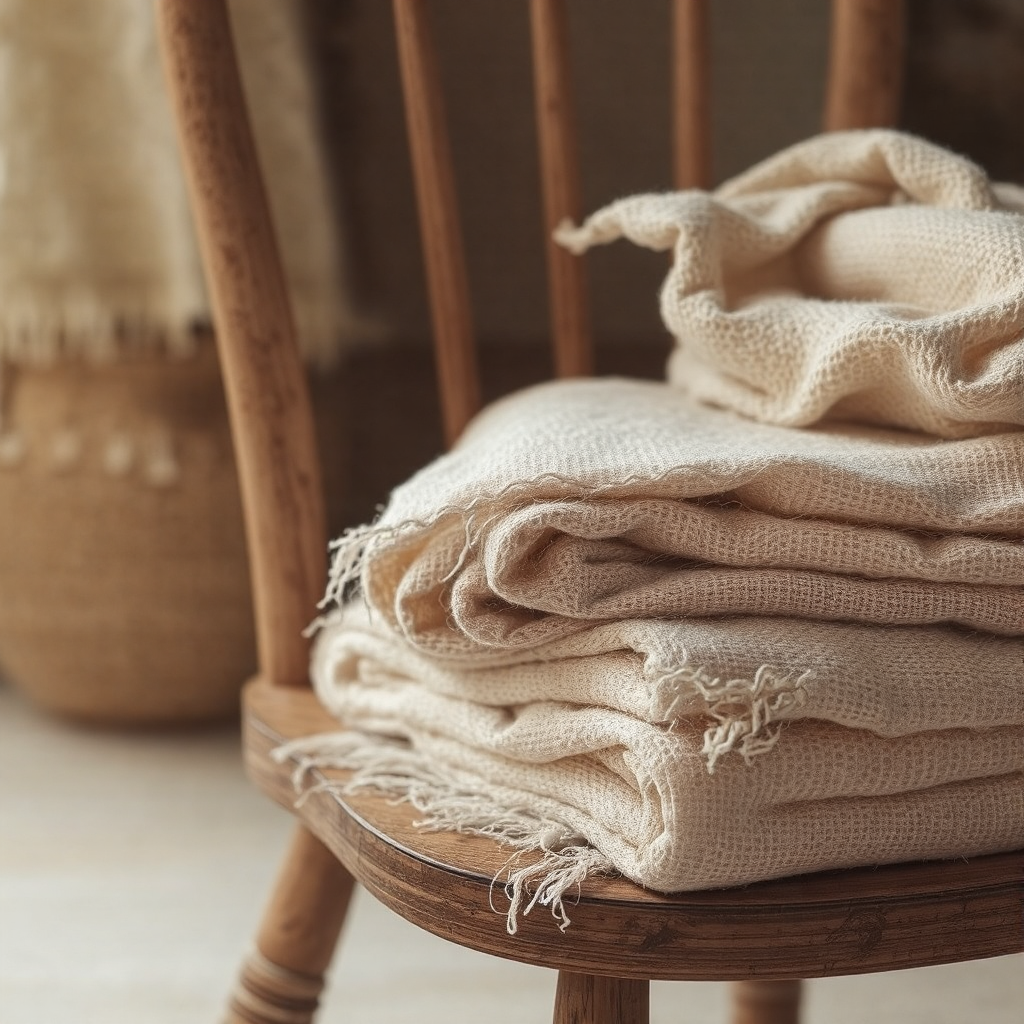Introduction to Nordic Design
Nordic design refers to the aesthetic and functional principles that emerged from the Scandinavian countries, notably Denmark, Finland, Iceland, Norway, and Sweden. Rooted in the geography and cultural practices of these regions, it emphasizes simplicity, minimalism, and a deep connection with nature. The design philosophy finds its traces in the early 20th century but has evolved significantly over the decades, adapting to contemporary needs while remaining faithful to its core tenets.
At the heart of Nordic design is the principle of minimalism, where every element serves a purpose. This approach extends beyond mere aesthetics; it seeks to minimize clutter and create spaces that are both functional and inviting. In this design paradigm, furniture and décor are chosen for their utility as much as for their beauty, reflecting an ethos where every item contributes to a serene environment. This stands in contrast to more ornate design styles, focusing instead on clean lines and unfussy forms.
Another foundational aspect of Nordic design is its harmonious relationship with nature. The Scandinavian landscape, characterized by vast forests, striking coastlines, and a stark climate, influences the materials and colors used in Nordic interiors. Natural materials such as wood, leather, and wool are prevalent, embodying a sense of warmth and comfort. Additionally, the color palette is often muted, drawing from the earthy tones found in nature, which fosters a calming atmosphere within living spaces.
Ultimately, the essence of Nordic design lies in its ability to create serene, usable environments that promote well-being and functionality. As we further explore the principles and elements of this aesthetic, it becomes clear that Nordic design is not merely a stylistic choice but a holistic approach to living harmoniously with our surroundings.
The Use of Wood in Nordic Interiors
Wood plays a pivotal role in the development and essence of Nordic interiors, with its significance deeply embedded in the region’s design philosophy. Commonly used varieties such as pine and birch are favored for their durability, aesthetic charm, and sustainability. Pine, known for its light color and natural knots, imbues spaces with warmth and character, while birch offers a smoother finish with a slightly darker hue, enhancing sophistication.
The natural warmth of wood finishes is a defining characteristic of Nordic design. It is employed extensively in furniture, flooring, and decorative elements, creating a cohesive and inviting atmosphere. The tactile quality of wood provides a contrast to the contemporary minimalism often observed in these interiors, adding depth and richness without overwhelming the space. This balance is crucial to achieving a harmonious environment that reflects the core principles of Nordic aesthetics.
Architectural elements also leverage the beauty of wood. Exposed beams and wooden paneling can transform any room, fostering a connection to nature that is intrinsic to Nordic living. This harmonious relationship with the natural world is important in promoting well-being and tranquility within the home. Moreover, the use of wood in design facilitates an eco-friendly approach, aligning with sustainable practices that are increasingly prioritized in modern architecture.
In contemporary Nordic interiors, wood is often paired with other materials such as wool textiles and stone, enhancing the tactile experience while maintaining a clean and fresh aesthetic. By utilizing wood in various forms, from structural components to functional furnishings, designers evoke a sense of warmth that is essential to the Nordic lifestyle. This enduring preference for wood not only highlights its beauty but also serves as a testament to the enduring values of simplicity, functionality, and a deep connection to nature that defines Nordic interiors.
The Role of Wool in Textiles
Wool has long been a key material in Nordic interiors, cherished not only for its aesthetic appeal but also for its remarkable functionality. This natural fiber offers an array of qualities that make it an ideal choice for textiles such as blankets, rugs, and upholstery. One of the primary reasons for wool’s prominence is its inherent warmth. Wool fibers possess a unique structure that enables them to trap air, providing insulation in colder climates, which is particularly vital in Nordic regions known for their long winters.
Beyond warmth, wool also adds a distinct comfort to living spaces. Its ability to wick moisture away from the body helps maintain a cozy environment, which is essential for creating inviting and relaxing interiors. The texture of wool is another aspect that enhances its desirability; it offers a soft touch that complements both traditional and contemporary designs. Rugs made from wool are often favored for their durability and ease of maintenance, making them an ideal choice for high-traffic areas.
In addition to its practical qualities, wool aligns seamlessly with Nordic values that prioritize sustainability and eco-friendliness. As a renewable resource, wool is biodegradable and has a lower environmental impact compared to synthetic fibers. The production processes of wool textiles typically emphasize ethical practices, from animal husbandry to manufacturing, ensuring that the material retains its integrity. This commitment to sustainability resonates with the Nordic approach to design, which values natural materials and environmental consciousness.
Moreover, the use of wool in textiles contributes to the overall aesthetic of Nordic interior design. Whether utilized in soft furnishings, curtains, or decorative pieces, wool enhances the atmosphere of simplicity and coziness that defines this style. In conclusion, wool serves as a staple in Nordic interiors, providing not only comfort and texture but also promoting sustainable practices that align with the region’s values.
The Power of White Space
In the realm of Nordic design, the concept of white space plays a pivotal role in establishing tranquility and spaciousness within living environments. Predominantly characterized by a neutral or white palette, this approach fosters a serene ambiance that is essential to the minimalist ethos found in Scandinavian interiors. The use of white, alongside soft neutrals, allows for an airy and open atmosphere that is conducive to relaxation and mental clarity.
One of the primary principles of Nordic style is the balance between light and dark. This equilibrium not only contributes to visual interest but also enhances the play of natural light throughout the space. By strategically utilizing white walls and ceilings, light is reflected rather than absorbed, illuminating even the smallest of rooms. The strategic use of white space, therefore, does not merely contribute to aesthetic appeal; it actively promotes a brighter, more inviting space that aligns with the concept of hygge, or coziness, frequently associated with Scandinavian living.
To effectively incorporate white space into a home, consider the following tips. First, embrace a decluttered environment by minimizing excessive decorations and furniture. This does not mean sacrificing style; rather, select a few key pieces that contribute to the overall design. Second, use furniture and textiles that contrast gently with the white background. For example, soft wool throws or warm wooden accents add warmth and texture without overwhelming the space. Lastly, ensure that windows are unobstructed to maximize natural light. By incorporating mindful choices that respect the importance of white space, one can create a harmonious environment that profoundly reflects Nordic values of simplicity and tranquility.
Navigating the Significance of Natural Light in Nordic Design
In Nordic design, the integration and importance of natural light are paramount. The region’s geographical location results in significant seasonal variations in daylight, particularly during winter. The long, dark months have necessitated a profound appreciation for light, influencing the architectural choices prevalent in the Nordic aesthetic. Large windows, which are commonly seen across many Nordic homes, serve not only to invite sunlight but also to create an illusion of openness and connectivity with the surrounding landscape.
Incorporating ample natural light into interiors is often achieved through the use of light-colored materials. By choosing pale woods, white walls, and soft, airy textiles, Nordic environments are designed to maximize brightness and create a sense of warmth, even during the coldest months. This mindful approach emphasizes the idea that sunlight contributes to mood enhancement and overall well-being. Studies have shown that access to natural light can significantly affect psychological health, improving mood and cognitive function, making it a crucial design element in Scandinavian homes.
Moreover, practical solutions such as strategically placed mirrors and reflective surfaces enhance the distribution of light throughout interior spaces. These design techniques enable natural light to bounce around, further brightening areas that might otherwise remain dim. The use of transparent or translucent window treatments is also common to reduce glare while still allowing an abundance of light to permeate living areas. By understanding how to effectively harness natural light, Nordic design beautifully reflects a lifestyle that prioritizes well-being and comfort.
Ultimately, acknowledging the significance of natural light in Nordic living is essential for crafting interiors that are not only visually appealing but also conducive to a healthy and fulfilling life. Emphasizing this element underscores the harmonious relationship between nature and interior design present in the Nordic aesthetic.
Functional and Minimalist Furniture
The principles of functionalism and minimalism are deeply rooted in Nordic design, establishing a framework that emphasizes both aesthetic appeal and practical utility. This approach to furniture design is characterized by clean lines, simple forms, and an overall sense of harmony with the living environment. Nordic designers have historically believed that furniture should not only serve a purpose but also enhance the overall ambiance of a space, encouraging a balance between functionality and beauty.
Prominent figures such as Alvar Aalto, Arne Jacobsen, and Hans J. Wegner have significantly contributed to the minimalist furniture movement. Alvar Aalto’s iconic “Paimio Chair” exemplifies how form and function work in tandem, providing comfort while maintaining an understated elegance. Similarly, Hans J. Wegner is renowned for his “Wishbone Chair,” which showcases meticulous craftsmanship combined with ergonomic design, offering an inviting seat without overwhelming a room.
In contemporary Nordic interiors, multi-functional furniture has gained prominence, not only to cater to a growing need for space efficiency but also as a testament to the ethos of minimalistic living. Pieces that serve dual purposes—such as a coffee table that transforms into a dining table or a sofa that easily converts into a guest bed—allow for a dynamic lifestyle without compromising on style. This approach not only maximizes limited space but also enables a flexible arrangement, adapting to the varying needs of modern living. The integration of such versatile designs reflects a holistic view of home where every element plays a critical role in enhancing comfort and functionality.
In conclusion, the fusion of functionalism and minimalism within Nordic furniture design showcases an enduring commitment to both aesthetics and practicality. The iconic designs and innovative use of multi-functional pieces demonstrate how well-crafted furniture can elevate a living space while adhering to the principles that define Nordic style.
Accessing Nature: Indoor-Outdoor Connection
The Nordic design aesthetic emphasizes a seamless indoor-outdoor connection, creating an environment where nature is both accessible and appreciated. This philosophy can be implemented in various ways, allowing for a harmonious blend between the interior spaces of a home and the natural surroundings. To achieve this integration, one effective strategy is the incorporation of large windows or glass doors that frame the outdoor views. By positioning these elements thoughtfully within the architectural layout, a sense of continuity between indoors and outdoors is established, allowing natural light to fill the living spaces and create a more spacious feel.
Moreover, the introduction of plants plays a crucial role in enhancing this connection. Houseplants not only serve as decorative elements but also foster a sense of tranquility and well-being. Various species, such as ferns and succulents, can be selected based on their aesthetic appeal and ability to thrive in indoor conditions. The use of natural materials, such as wood and stone, can further bridge the gap between interior and exterior environments. Incorporating these materials in furniture, flooring, and accents not only reflects nature’s beauty but also provides an organic feel to the home.
The therapeutic benefits of integrating nature into living spaces, especially in urban settings, cannot be overstated. Studies have shown that proximity to greenery can reduce stress levels and improve overall emotional health. In high-density living areas where access to natural environments may be limited, creating an indoor garden or incorporating vertical gardening systems can significantly enhance the quality of life. Such elements provide a personal sanctuary amidst the hustle and bustle of city life. Ultimately, fostering a strong indoor-outdoor connection is not merely an aesthetic choice; it is a lifestyle enhancement that deeply resonates with the principles of Nordic design.
Personalization Through Accessories
Accessories play a crucial role in personalizing Nordic style interiors, allowing individuals to express their unique tastes while adhering to the aesthetic’s core principles. The Nordic design philosophy is fundamentally rooted in minimalism, characterized by neutral color palettes, natural materials, and functional simplicity. Thus, when selecting accessories, it is essential to choose items that not only mirror personal style but also enhance the overall ambiance without overwhelming the space.
Popular decor items that embrace the Nordic style include ceramics, art, and textiles. Nordic ceramics, known for their clean lines and subtle glaze finishes, provide an excellent opportunity to showcase artistic flair. Whether displaying hand-crafted vases or simple dinnerware, these pieces can add warmth and character to a space without compromising the minimalist ethos. Furthermore, their organic shapes and earthy tones create a harmonious balance with the natural wood elements often seen in Nordic interiors.
Art also serves as a vital accessory in Nordic homes. Selecting pieces that resonate with personal experiences or cultural backgrounds can transform a space into a reflection of one’s identity. Local artists’ works or prints of minimalist landscapes can maintain the design’s integrity while injecting personality. When choosing artwork, consider size and scale to ensure it complements the room’s proportions, enhancing visual development without cluttering.
Textiles are another critical component that facilitates personalization in Nordic spaces. Natural fibers such as wool, linen, and cotton offer inviting textures and warmth, essential for creating cozy environments. Whether incorporating patterned cushions or throws, these soft furnishings can introduce subtle color variations and texture, enriching the aesthetic without detracting from simplicity. Selecting accessories that blend seamlessly with existing elements will ensure that the Nordic style remains prominent throughout the design.
Embracing Sustainability in Nordic Style
Nordic style is not merely a design aesthetic; it inherently embraces principles of sustainability that resonate deeply within nature and society. At its core, this design philosophy prioritizes eco-friendly materials and promotes responsible production processes while ensuring that the environment is preserved for future generations. The marriage of minimalism and functionality in Nordic design allows for the use of natural materials like wood, wool, and stone, which are sustainably sourced and give a sense of warmth to any space.
In selecting Nordic furniture and decor, emphasis on sustainable practices is paramount. Many Nordic manufacturers adhere to regulations that ensure their products are made from renewable resources and have a minimized carbon footprint. For instance, wood is often sourced from responsibly managed forests, ensuring biodiversity is maintained. Wool, a predominant textile in Nordic homes, is frequently derived from sheep that are raised in a sustainable manner, promoting animal welfare and ecological stability.
Moreover, recycling and reusing materials play an essential role in crafting a lasting, responsible home. Nordic design encourages individuals to consider longevity in their purchases—investment in timeless pieces that can endure both in style and functionality. This approach reduces waste and underscores the philosophy that home decor should be meaningful and enduring rather than disposable. As consumers become more environmentally conscious, the transition towards purchasing sustainable products becomes increasingly important.
Ultimately, embracing sustainability in Nordic style translates into creating a home that reflects personal values while being in harmony with nature. Investing in eco-friendly materials and promoting responsible consumption ensures that not just the physical space, but the broader ecological footprint, is thoughtfully managed. Through these practices, Nordic style continues to inspire a shift toward a more sustainable way of living.



